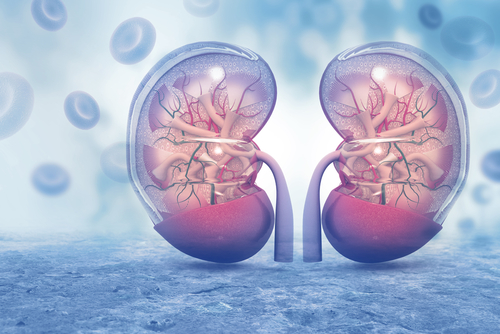Scleroderma Renal Crisis Linked to High Mortality in Thai Patients with Systemic Sclerosis, Study Confirms

Researchers found that scleroderma renal crisis (SRC), a severe complication of systemic sclerosis (SSc), is associated with high mortality in Thai patients. The study also shows that the major risk factors for SRC include heart involvement, ongoing treatment with high dosages of the steroid medication prednisolone, low blood albumin levels, and digital gangrene.
The study, “Risk factors and outcome of Thai patients with scleroderma renal crisis: a disease duration-matched case control study,” was published in the International Journal of Rheumatic Diseases.
Past studies have shown that approximately 4% of SSc patients develop SRC.
Angiotensin-converting enzyme inhibitors (ACEi), therapies commonly used to manage hypertension, were seen to prevent kidney damage and to help manage chronic kidney disease. Their use was also found to reduce SRC frequency in the global SSc population, reducing mortality rates associated with this complication.
For SRC risk factors in Western countries, several studies have cited diffuse and rapid progression of skin involvement, associated cardiac events, anemia, and other factors. However, information on the prevalence and risk factors of SRC in Asian populations is limited.
Researchers from Chiang Mai University, Thailand, retrospectively reviewed clinical data from 608 Thai patients with SSc who were seen at the university’s rheumatology division from January 1990 to December 2015.
Of these patients, 3.13% had SRC, an incidence rate that is similar to previously reported Japanese and Western studies. Seventeen of the 19 patients with SRC, or 89.5%, had diffuse cutaneous SSc, a subtype.
The team found that SSc patients with SRC had more comorbidities than patients without SRC, including congestive heart failure, infection, low blood pressure, muscle inflammation, and accumulation of liquid around the heart.
In addition, these patients also presented increased rates of red blood cell sedimentation and creatine kinase, along with lower serum albumin levels, which indicated a higher inflammatory status.
The researchers found that patients with digital gangrene were eight times more likely to have SRC. This is the first report of an association between digital gangrene and SRC risk.
Systemic sclerosis is often associated with damage to endothelial cells, the cells lining blood vessels. This leads to a variety of “clinical manifestations, including Raynaud’s phenomenon, digital ulcer, digital gangrene, PAH [pulmonary arterial hypertension] and SRC. Therefore, SSc patients with digital gangrene, reflecting severe endothelial damage, are at higher risk of developing SRC,” the researchers wrote.
Other factors, such as heart involvement, ongoing treatment with high-dose prednisolone, and low blood albumin levels were also identified as risk factors for SRC, similar to previous reports.
Of the 19 patients with SRC, 15 (78.9%) underwent hemodialysis to manage their condition. Ten (52.6%) died within a median period of just over two weeks upon being diagnosed with SRC, “confirming the seriousness of this complication,” researchers added.
“SRC was an uncommon complication in Thai patients with SSc, but associated with high morbidity and mortality,” the researchers wrote. “To our knowledge, this is the first observational study of risk factors of SRC in Asians with SSc, the majority of whom were in the dcSSc subset with early disease duration. …”






